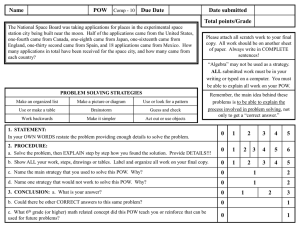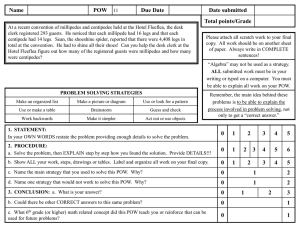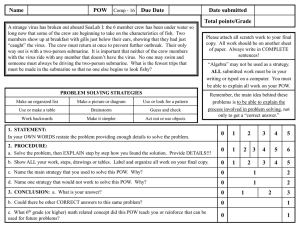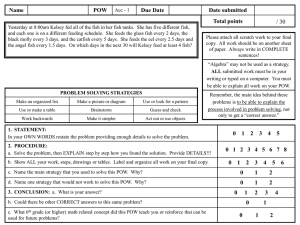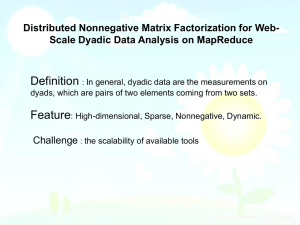\DOC REAL_POLY_CONV \TYPE {REAL_POLY_CONV : term
advertisement
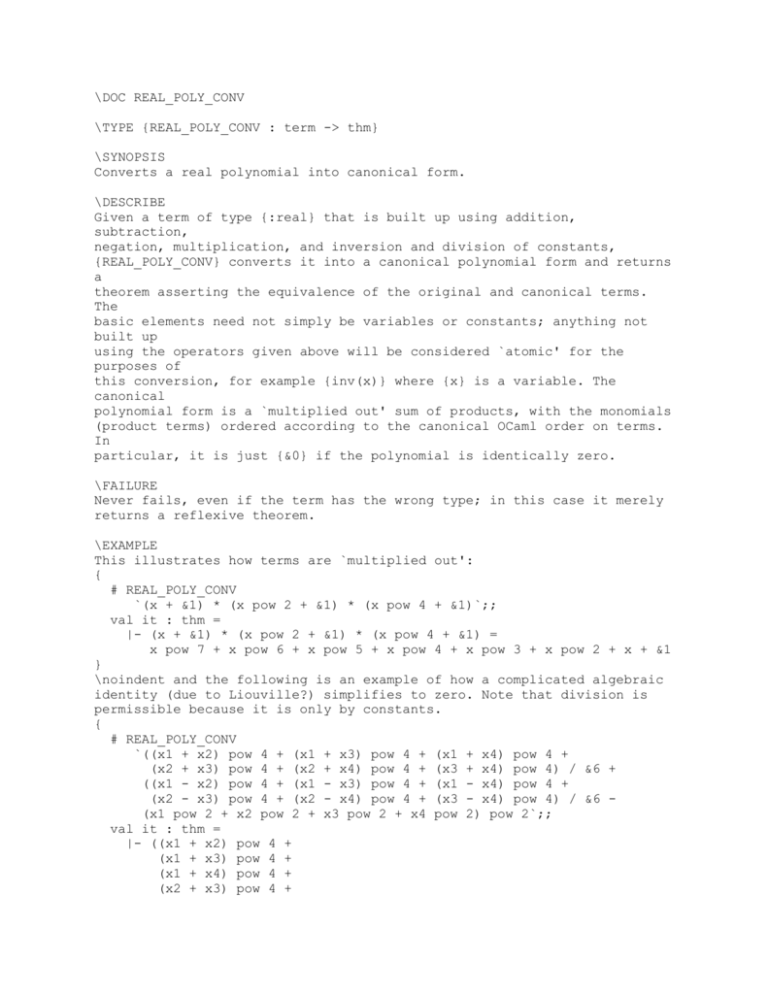
\DOC REAL_POLY_CONV
\TYPE {REAL_POLY_CONV : term -> thm}
\SYNOPSIS
Converts a real polynomial into canonical form.
\DESCRIBE
Given a term of type {:real} that is built up using addition,
subtraction,
negation, multiplication, and inversion and division of constants,
{REAL_POLY_CONV} converts it into a canonical polynomial form and returns
a
theorem asserting the equivalence of the original and canonical terms.
The
basic elements need not simply be variables or constants; anything not
built up
using the operators given above will be considered `atomic' for the
purposes of
this conversion, for example {inv(x)} where {x} is a variable. The
canonical
polynomial form is a `multiplied out' sum of products, with the monomials
(product terms) ordered according to the canonical OCaml order on terms.
In
particular, it is just {&0} if the polynomial is identically zero.
\FAILURE
Never fails, even if the term has the wrong type; in this case it merely
returns a reflexive theorem.
\EXAMPLE
This illustrates how terms are `multiplied out':
{
# REAL_POLY_CONV
`(x + &1) * (x pow 2 + &1) * (x pow 4 + &1)`;;
val it : thm =
|- (x + &1) * (x pow 2 + &1) * (x pow 4 + &1) =
x pow 7 + x pow 6 + x pow 5 + x pow 4 + x pow 3 + x pow 2 + x + &1
}
\noindent and the following is an example of how a complicated algebraic
identity (due to Liouville?) simplifies to zero. Note that division is
permissible because it is only by constants.
{
# REAL_POLY_CONV
`((x1 + x2) pow 4 + (x1 + x3) pow 4 + (x1 + x4) pow 4 +
(x2 + x3) pow 4 + (x2 + x4) pow 4 + (x3 + x4) pow 4) / &6 +
((x1 - x2) pow 4 + (x1 - x3) pow 4 + (x1 - x4) pow 4 +
(x2 - x3) pow 4 + (x2 - x4) pow 4 + (x3 - x4) pow 4) / &6 (x1 pow 2 + x2 pow 2 + x3 pow 2 + x4 pow 2) pow 2`;;
val it : thm =
|- ((x1 + x2) pow 4 +
(x1 + x3) pow 4 +
(x1 + x4) pow 4 +
(x2 + x3) pow 4 +
(x2 + x4) pow
(x3 + x4) pow
&6 +
((x1 - x2) pow
(x1 - x3) pow
(x1 - x4) pow
(x2 - x3) pow
(x2 - x4) pow
(x3 - x4) pow
&6 (x1 pow 2 + x2
&0
4 +
4) /
4 +
4 +
4 +
4 +
4 +
4) /
pow 2 + x3 pow 2 + x4 pow 2) pow 2 =
}
\USES
Keeping terms in normal form. For simply proving equalities, {REAL_RING}
is
more powerful and usually more convenient.
\SEEALSO
INT_POLY_CONV, REAL_ARITH, REAL_RING, SEMIRING_NORMALIZERS_CONV.
\ENDDOC

